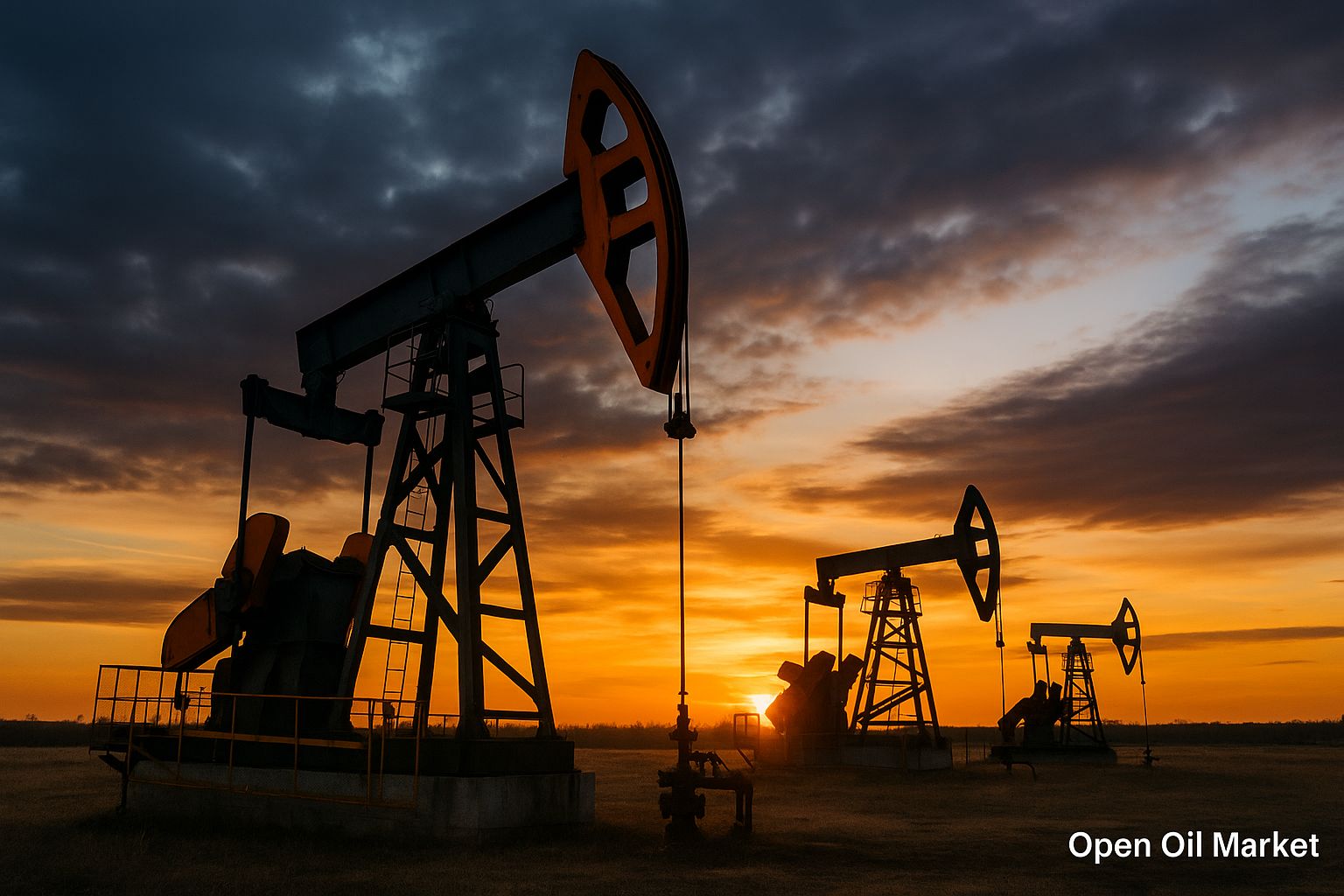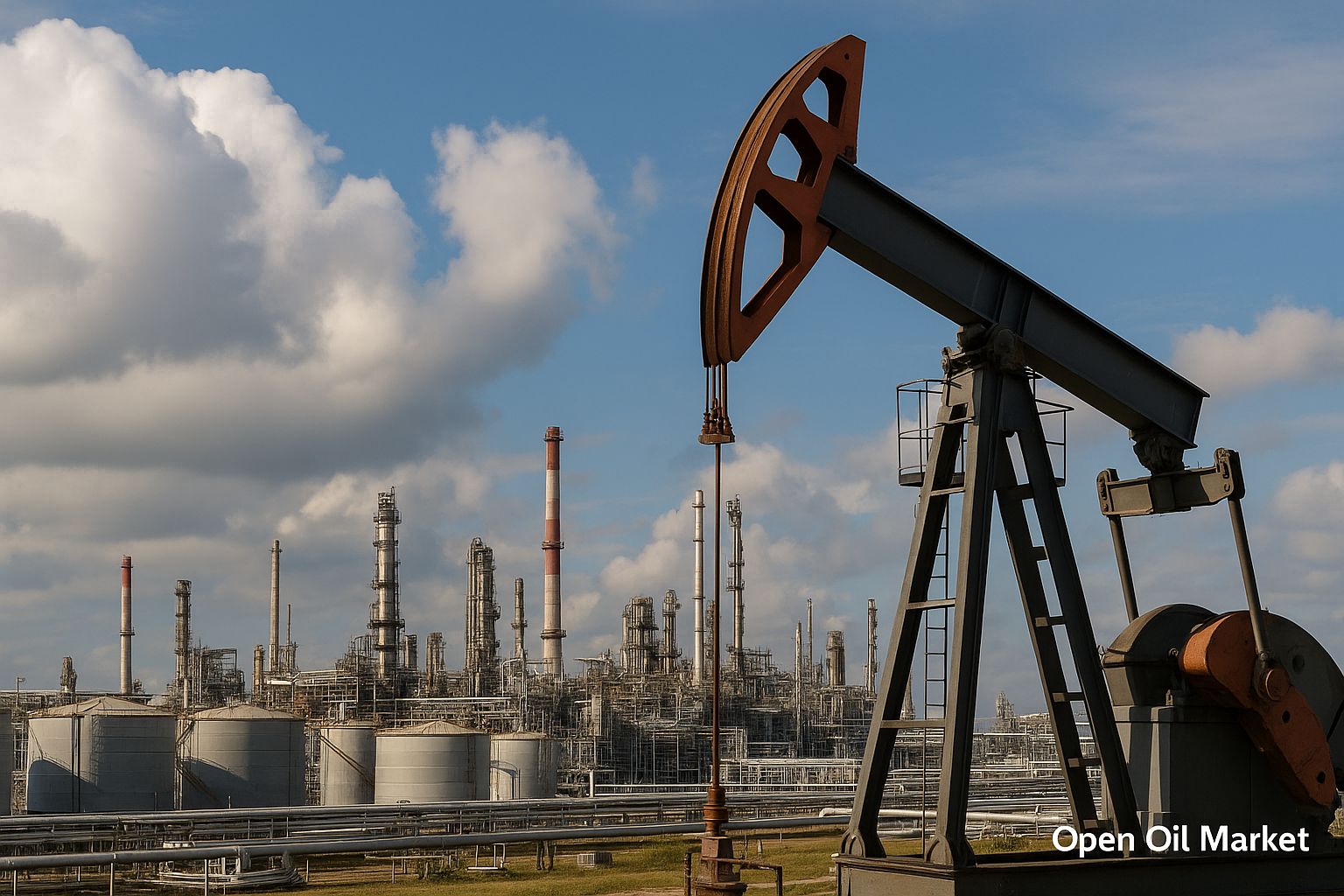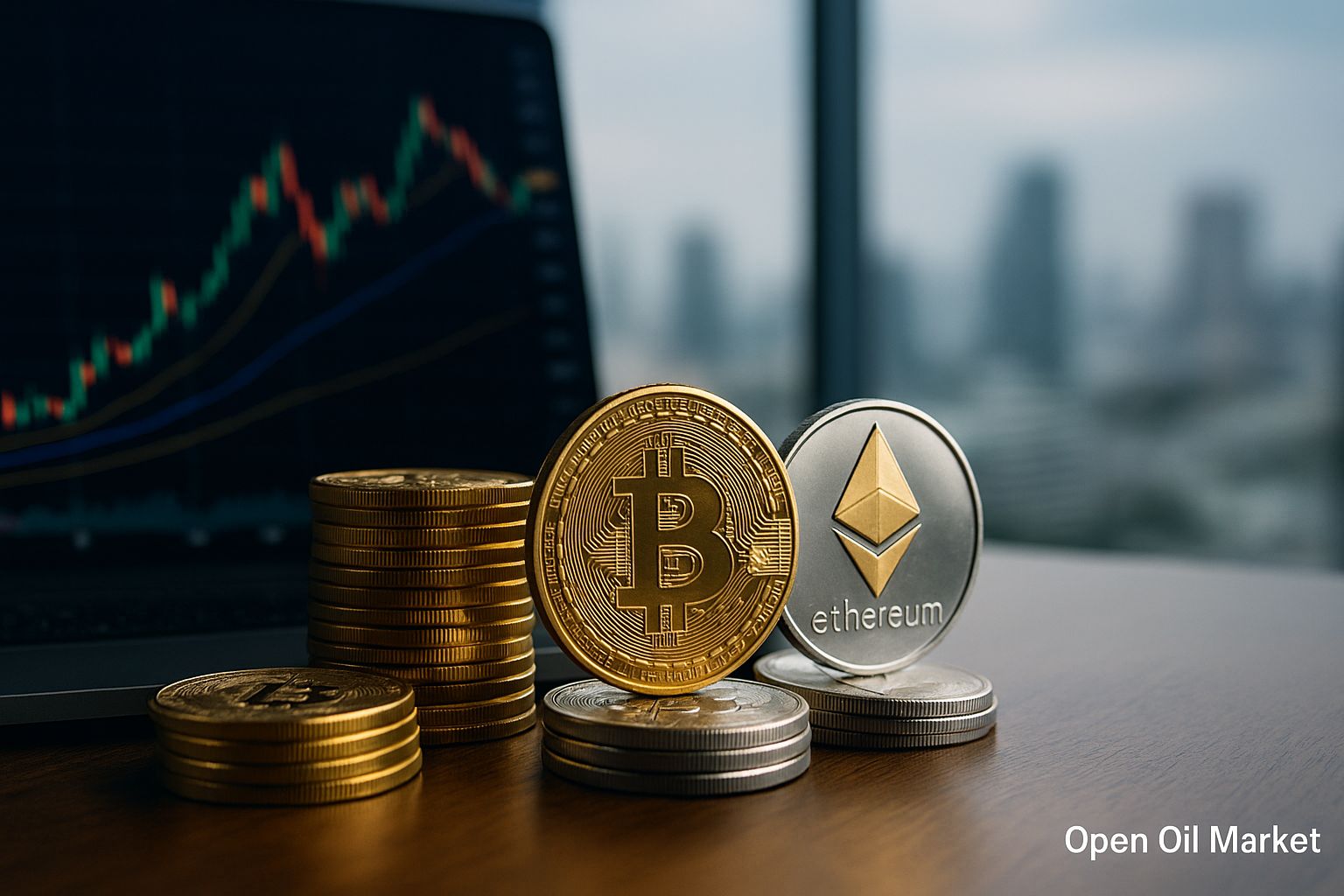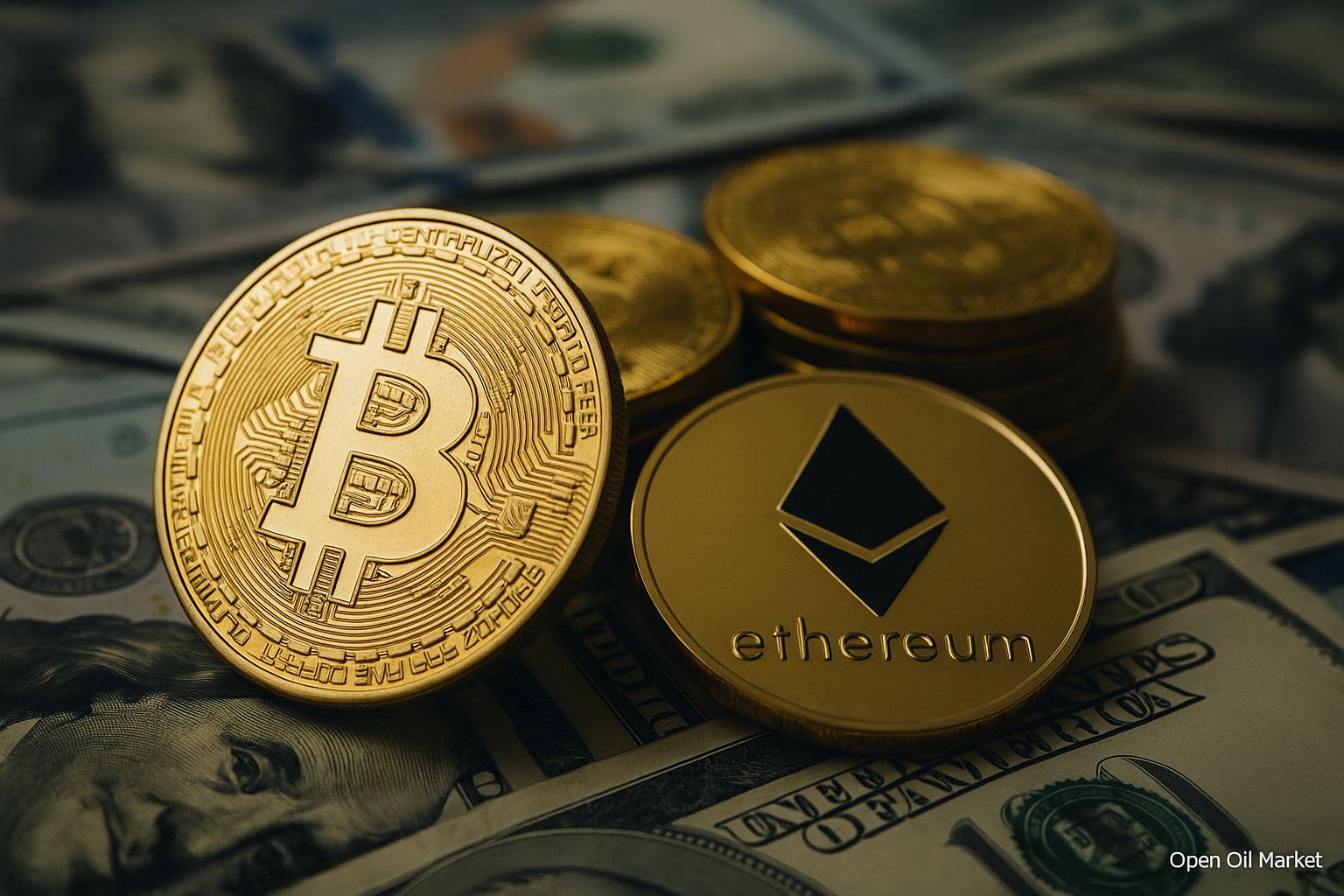
Current News in the Fuel and Energy Sector as of November 11, 2025: Signals of Easing Sanctions Tensions, Stable Oil Prices, Strong Gas Supplies in Europe, and Progress in Energy Transition. A Detailed Overview for Investors and Companies in the Fuel and Energy Sector.
As of November 11, 2025, the global fuel and energy complex remains in a state of ongoing geopolitical tension, although signals of a possible de-escalation of sanctions tensions are emerging. The sanctions confrontation between Russia and the West remains a key factor for the industry: the European Union has approved another (19th) package of restrictions aimed at reducing the revenues of the Russian energy sector (including a phased ban on Russian gas imports by 2026-2027), while the United States imposed sanctions against major Russian oil and gas companies at the end of October, and their consequences are already being felt. The oil company Lukoil was forced to declare force majeure at its largest foreign field in Iraq due to frozen payments caused by US sanctions. At the same time, Washington is demonstrating flexibility—after the visit of Hungarian Prime Minister Viktor Orban, President Donald Trump agreed to grant Budapest a one-year waiver from sanctions on the purchase of Russian oil and gas. This move instills cautious hopes for a partial easing of energy restrictions for certain allies, despite the overall retention of sanctions pressure.
Concurrently, commodity markets are exhibiting relative stability. Oil prices have settled at moderate levels: the North Sea benchmark, Brent, is trading around $63–65 per barrel. These values are significantly lower than the summer peaks, reflecting expectations of a supply surplus by the end of the year. High production from OPEC+ and record volumes of oil from the United States are compensating for slowing demand growth, creating a "bearish" backdrop. However, geopolitical risks and uncertainties surrounding sanctions are creating a slight premium in prices, preventing quotes from falling even lower.
The European gas market is confidently heading into the winter season: underground gas storage facilities in EU countries are filled to about 85%, and diversified LNG imports from the US, Qatar, and other exporters are compensating for the sharp reduction in pipeline supplies from Russia. Gas prices in Europe remain at levels significantly below the crisis peaks of 2022; volatility in recent months has been primarily driven by weather factors. If the upcoming winter does not deliver abnormal cold, Europe has every chance to get through the heating season without price shocks.
The global energy transition is gaining momentum. In 2025, a record increase in renewable energy capacity continues—ranging from large solar parks to offshore wind farms. Many countries are reaching new peaks in "green" energy generation, although to ensure the reliability of energy systems, governments must simultaneously support traditional generation (gas, coal, nuclear). Concurrently, innovations are being introduced: sales of electric vehicles are rising, hydrogen projects are being launched, and energy companies are investing in energy storage systems and digitalization of networks.
In Russia, the emergency measures taken in the fall to stabilize the internal fuel market are yielding results. Export restrictions on gasoline and diesel, along with adjustments to damping subsidies for refineries, have helped lower wholesale prices and supply fuel to problematic regions. After a surge in prices in August, the situation at gas stations is normalizing; the government is considering gradually easing export barriers in early 2026, provided that prices remain accessible for domestic consumers.
Below is a detailed overview of the key events and trends in the segments of oil, gas, electricity, renewable sources, coal, and oil refining to date.
Key Points
- Oil: Supply from OPEC+ and record production in the US are keeping oil prices in a moderate range (~$60–65 for Brent) amid slowing demand growth.
- Gas: Europe is entering winter with high gas reserves (~85% storage capacity); record LNG imports from the US, Qatar, and other countries are compensating for the reduction in pipeline supplies, preventing prices from rising sharply.
- Sanctions and Geopolitics: New measures from the US and EU intensify pressure on the Russian energy sector; companies and investors are forced to adapt, redirecting markets. However, the US decision to exempt Hungary from some restrictions signals a possibility of exceptions for allies.
- Asia: China and India remain key drivers of hydrocarbon demand. A slowdown in China's economy limits consumption growth, while India, despite pressure from the West, continues to purchase Russian oil. Both nations are simultaneously increasing investments in renewable energy to enhance energy security.
- Electricity and Renewables: Global generation from renewable sources in 2025 is reaching records, with accelerated growth in wind and solar capacities, although the variable nature of "green" energy requires the development of storage systems and support for base load generation (nuclear, gas) for reliability.
- Russian Fuel Market: In Russia, export restrictions on gasoline and diesel have been extended, stabilizing internal prices after the summer spike. Additional volumes of fuel have been directed to the domestic market, normalizing the situation at gas stations; gradual lifting of export barriers in 2026 is being discussed, conditional on price stability.
Oil Market: Oversupply and Slowing Demand Restrain Prices
Prices. By mid-November, global oil prices remain at relatively low levels following a decrease in the fall. The benchmark Brent blend is trading in the range of approximately $63–65 per barrel. This level is about 10–15% lower than at the start of summer, reflecting a shift in market balance towards oversupply. Geopolitical factors (conflicts and sanction risks) add a slight premium to prices, but in general, market participants remain cautious.
- Supply: OPEC+ countries are gradually increasing production after a period of strict restrictions. At an extraordinary meeting in early November, the alliance approved a symbolic increase in quotas (~+137,000 barrels per day starting in December), deferring more substantial growth until the first quarter of 2026. At the same time, US oil production has reached a record ~13 million barrels per day due to the shale boom and relaxed environmental regulations. High supply from OPEC+, the US, and other producers is softening the global balance.
- Demand: Global oil consumption growth is slowing. According to the International Energy Agency (IEA), demand growth in 2025 will be less than 1 million barrels per day (compared to a growth of over 2 million barrels per day in 2023). OPEC also predicts moderate growth (~+1.3 million barrels per day). The reasons include a slowdown in the global economy (especially in China), the effect of previous high prices stimulating energy conservation and efficiency improvements, and the accelerated adoption of electric vehicles, which reduces fuel consumption.
- Reserves: Commercial oil and petroleum product inventories outside of OPEC have increased in recent months. In the US, strategic oil reserves began to be replenished in the fall, supported by record production and moderate prices. Additionally, some previously restricted volumes have returned to the market: for instance, export supplies from the oil Kurdistan (Iraq) have resumed after a lengthy pause. The growth in reserves further intensifies price pressure.
Outlook. The oil market is closing the year in a state of relative balance with a tendency toward oversupply. Without significant unforeseen events, prices are likely to remain within a moderate range until the end of the year. Concerns over supply disruptions or increased sanctions prevent prices from crashing, but expectations of increased supply from OPEC+ and shale companies create a predominance of "bearish" sentiment. Industry companies are focusing on cost control and risk hedging, while refiners strive to optimize output (gasoline, diesel, aviation fuel) and logistics amid restrained prices.
Gas Market: Europe is Confident Ahead of the Winter Season
Situation in Europe. The natural gas market is relatively stable despite the approaching winter. European countries have managed to accumulate significant volumes of gas in advance: according to Gas Infrastructure Europe, as of early November, EU gas storage facilities are approximately 85% full. Although this figure is lower than the level of a year ago, it still provides a solid reserve in case of a cold winter. Diversification of import sources has allowed compensation for the reduction in Russian pipeline gas. Record volumes of liquefied natural gas (LNG) from the US, Qatar, and other exporters support supply in the European market.
- Storage and Imports: The high level of storage coupled with ongoing LNG supplies means that Europe is entering the heating season well-prepared. Weak gas demand in Asia during the first half of the year has also benefited Europe, allowing additional LNG shipments to be directed to European terminals.
- Prices: Thanks to the accumulated reserves and alternative supplies, wholesale gas prices in the EU are maintained significantly below the peaks of 2022. In recent months, quotes have fluctuated within a moderate range, primarily reacting to weather changes. If winter is not excessively cold and competition from Asia for new LNG shipments remains moderate, the European gas market has a chance to get through the season without price shocks.
- Demand and Generation: Efforts for energy efficiency and a weak industrial outlook are restraining gas consumption. However, gas plays a key role in electricity generation as a balancing fuel: during reductions in output from wind or solar power plants, the EU energy system increases the share of gas (and occasionally coal) generation—as occurred in the fall when there was a prolonged lull in wind in Northern Europe.
Markets and Risks. Overall, the European gas market is demonstrating resilience. Traders and energy companies are closely monitoring weather forecasts, maintenance schedules, and LNG tanker delivery timelines to respond quickly to changing balances. The main uncertainty remains the temperature factor: prolonged cold spells could increase withdrawals from storage and push prices up. However, compared to previous years, Europe feels more confident thanks to accumulated reserves and diversified import routes.
Electricity: Supply Stability and Nuclear Renaissance
In the electricity sector, major markets are maintaining supply stability, and authorities are prioritizing energy security amid the shift to clean energy. In 2025, several countries have strengthened support for base load capacities: for example, Japan has announced plans to accelerate the restart of idled nuclear reactors, aiming to reduce hydrocarbon imports and curb inflation. This "nuclear renaissance" is also being observed in other regions—more countries are considering nuclear generation and modern small reactors as a means to ensure the reliability of energy systems and achieve decarbonization goals.
Concurrently, modernization of electric grids and the development of "smart" infrastructure for the integration of the growing share of renewables continues. Energy companies are investing in digital demand management systems and distributed networks to increase the flexibility of electricity supply. In the short term, thanks to sufficient reserves of traditional capacities (gas, coal, and nuclear power plants) and accumulated fuel stocks, the risk of electricity shortages this winter is minimal. However, the long-term trend of energy transition requires the industry to continually balance the implementation of new technologies with maintaining grid reliability.
Renewable Energy: Record Growth and Variability Challenges
The renewable energy (RE) sector in 2025 is demonstrating accelerated development. According to industry reports, global installed renewable energy capacity has significantly increased: large solar and wind power plants are being brought online—from China and India to Europe and the US. Global energy generation from solar and wind has reached new highs—during the first half of 2025, it exceeded generation from coal-fired power plants for the first time. Major energy companies and investment funds are directing record funds into clean energy projects, while governments support the industry with ambitious goals and subsidies (for example, the UK's plan to double jobs in the clean energy sector by 2030).
- Investments and Capacities: Annual investments in renewable energy are setting new records, approaching $700 billion in 2024 and continuing to grow in 2025. The pace of capacity additions has increased by more than 10% compared to last year. However, to achieve the global goal of tripling renewable capacity by 2030 (adopted at the COP28 summit), this is still insufficient—experts are calling for a doubling of current construction rates for re and grid modernization.
- Infrastructure Challenges: The rapid rise in the share of renewables reveals integration challenges. In some regions in 2025, there were periods when generation from wind and hydropower fell sharply due to weak winds or droughts. To cover the shortfall, fossil fuel generation had to be temporarily increased, which contradicted emission reduction goals. These cases underscore the urgent need for accelerated development of energy storage systems (industrial batteries) and construction of flexible backup capacities capable of compensating for the variability of renewable generation.
- Company Strategies: Oil, gas, and energy corporations are responding to energy transition trends by increasing investments in solar and wind projects, bioenergy, hydrogen technologies, and carbon capture systems. This diversification allows them to remain competitive as the share of fossil fuels in the global energy balance gradually declines.
Conclusion. Despite record progress, the world is still far from climate goals. Growth in renewables must be accompanied by infrastructure modernization and new policy measures to eliminate bottlenecks and ensure the sustainable development of the sector without disruptions in energy supply.
Coal Sector: Declining Demand and Price Stabilization
The global coal market in 2025 is under the influence of a long-term trend of reducing coal's role in the energy balance. Analysts estimate that global coal consumption may decline by 5–10% for the year, as major economies continue to transition to cleaner energy sources. The decrease in demand, especially from China for imported coal, and overall market saturation have led to a moderate decline in prices compared to a year ago. Futures for thermal coal have stabilized around $100–110 per ton.
- Regional Features: In Europe and North America, the use of coal in electricity generation is steadily declining—old coal-fired power plants are being closed or converted to natural gas and biomass as part of climate policy. In Asia, on the other hand, coal remains a significant fuel: India and some Southeast Asian countries are still commissioning new coal plants to meet the growing demand for electricity. However, even there, appetite for coal is being restrained—projects are increasingly being reevaluated in favor of renewables or gas.
- Exports and Production: Major coal exporters (Australia, Indonesia, Russia, South Africa) are facing declining external demand. For example, US coal exports in the first half of 2025 dropped by over 10% due to reduced purchases from China and oversupply in the global market. Mines are cutting production in response to lower demand to avoid accumulating excess stocks.
- Price Background: Following sharp price spikes in 2022 during the energy crisis, the coal market in 2025 is relatively calm. Current prices, while having risen by 5–7% over the past month due to seasonal demand, remain significantly below the record highs of the last decade. The equilibrium is maintained as supply quickly adjusts to lower demand—several outdated capacities are being closed, preventing prices from falling too low.
Outlook. In the future, climate pressure on the coal sector will intensify: more countries are setting deadlines for phasing out coal generation (for many developed countries—the 2040s). Developing economies are betting on emission cleaning technologies and gradual reductions in coal's share. For investors, the coal sector remains a high-risk area, although short-term price spikes are possible depending on weather conditions and demand in Asia (for example, for coking coal for metallurgy).
Refined Products and Processing Market: Stable Supply and Government Regulation
The global refined products market at the end of 2025 is characterized by relatively stable prices and sufficient supply levels. Gasoline and diesel prices have decreased compared to peak values last year, reflecting the lower cost of crude oil and the absence of acute shortages in major markets. At the same time, the margins for refiners remain compressed due to high costs and structural declines in demand for traditional fuels.
- Supply: New refining capacities coming online in the Middle East and Asia (including major refineries in China and the Persian Gulf countries) have increased global fuel supply. Simultaneously, in Europe and North America, several outdated refineries have reduced processing or shut down due to low profitability and environmental regulations. Overall, global refining capacities exceed current demand, ensuring sufficient supply of gasoline, diesel, and jet fuel.
- Demand: Consumption of gasoline is stagnating or decreasing in developed countries as the electric vehicle fleet grows and fuel efficiency of internal combustion engines improves. Demand for diesel is also under pressure—more efficient technologies and alternatives are being implemented in transportation and industry. The only segment showing recovery is aviation fuel (kerosene), where consumption is rising as international flights pick up, although it has not yet reached 2019 levels.
- Regulation in Russia: In the fall of 2025, Russia continued its policy of strict control over the domestic market for refined products. The government extended the temporary ban on gasoline exports until the end of the year (with the possibility of extension into 2026), and restrictions on diesel exports remain in place—exporting fuel abroad is allowed only when the domestic market is fully supplied. At the same time, the damping compensation mechanism for refineries has been adjusted: the price threshold at which payments decrease has been increased, reducing the benefit of exports during periods of high global prices. Additional volumes of fuel from state reserves have also been directed to regions facing shortages in the summer to normalize the situation.
Results. The measures adopted have stabilized fuel prices within Russia in the fall. Wholesale prices for gasoline and diesel, which reached peaks in August, have decreased and are being maintained within a narrow range. Retail prices have stopped rising sharply, although they are still above last year's level. Thanks to improved supply to gas stations and the end of the harvesting campaign, tensions in the domestic fuel market have eased. Experts note that if current low oil prices are sustained, the government may cautiously ease export restrictions in early 2026—but only if the domestic market is fully saturated and prices for consumers are steadily decreasing.




